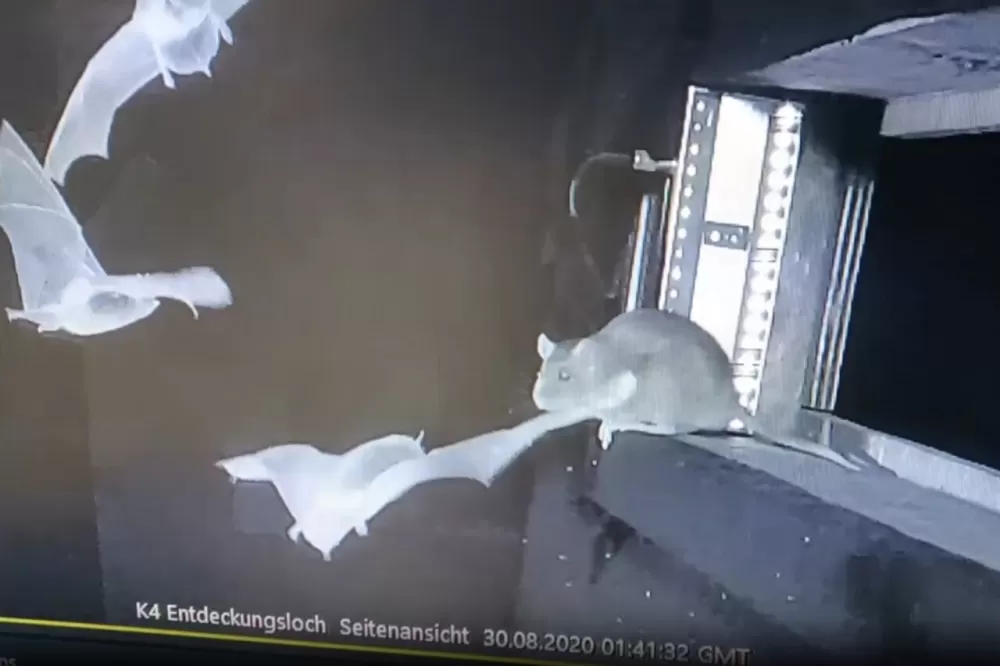When the Hunters Become the Hunted: Rats Taking to the Air to Snatch Bats—A Truly Unsettling Turn of Events
Share- Nishadil
- October 29, 2025
- 0 Comments
- 3 minutes read
- 16 Views

Rats Caught on Camera Snatching Bats Mid-Air, Astonishing Scientists
New footage reveals black rats in Brazil surprisingly snatching bats directly from the air, a behavior previously thought impossible. Scientists are now gravely concerned about the ecological implications and the incredible adaptability of these rodents.
Alright, let's talk about something that's frankly a little unsettling, something straight out of a nature documentary that forgot its script. We've all got a pretty good mental picture of a rat, right? Scuttling around, perhaps rummaging through our bins, maybe even a bit creepy, sure. But how about a rat, mid-leap, snatching a bat right out of the air? Yeah, that's happening, and honestly, scientists are more than a little taken aback, a bit concerned, you could say.
The scene? Picture a cave, specifically one in northeastern Brazil, a place where bats typically roost, finding safety in numbers and the darkness. Enter the black rat, or Rattus rattus, a species known for its adaptability, its knack for getting pretty much anywhere. But aerial hunting? That's a whole new level of ambition for a rodent, isn't it? Footage has emerged, captured by researchers, showing these surprisingly agile creatures launching themselves upwards, literally plucking bats from their flight paths. It’s a moment that makes you pause and think, 'Wait, did I see that correctly?'
Now, traditionally, we think of rats as ground-dwellers, opportunistic foragers, perhaps a little scruffy. We don't generally assign them the role of apex predator, especially not in an aerial context. And yet, here we are. This isn't just a one-off fluke, mind you; it's a documented, repeatable behavior. It suggests a fascinating—and frankly, a tad terrifying—evolution in their predatory repertoire. It forces us to reconsider what we thought we knew about their capabilities, their hunting instincts. And for once, the old adage about flying mammals being safe from rodents seems, well, completely out the window.
The implications, naturally, stretch far beyond just a surprising video clip. Scientists are grappling with what this could mean for fragile ecosystems. Bats, as we know, play absolutely vital roles in their environments—pollinating plants, controlling insect populations, even aiding in seed dispersal. A new, efficient predator could spell serious trouble, potentially disrupting the delicate balance these colonies maintain. And let's not forget the bigger picture: rats are often an invasive species, spreading rapidly and adapting to new food sources with remarkable speed.
Indeed, this bizarre dietary shift raises some pressing questions. Is this a response to scarcity elsewhere? An adaptation to a readily available food source that's, perhaps, a bit too easy to catch in the confined spaces of a cave? Or is it simply another testament to the incredible, and sometimes alarming, adaptability of these often-underestimated rodents? Whatever the reason, this newly observed behavior serves as a stark reminder that nature, for all its predictable rhythms, always holds a few wild cards up its sleeve, ready to surprise and, yes, even shock us.
Disclaimer: This article was generated in part using artificial intelligence and may contain errors or omissions. The content is provided for informational purposes only and does not constitute professional advice. We makes no representations or warranties regarding its accuracy, completeness, or reliability. Readers are advised to verify the information independently before relying on







